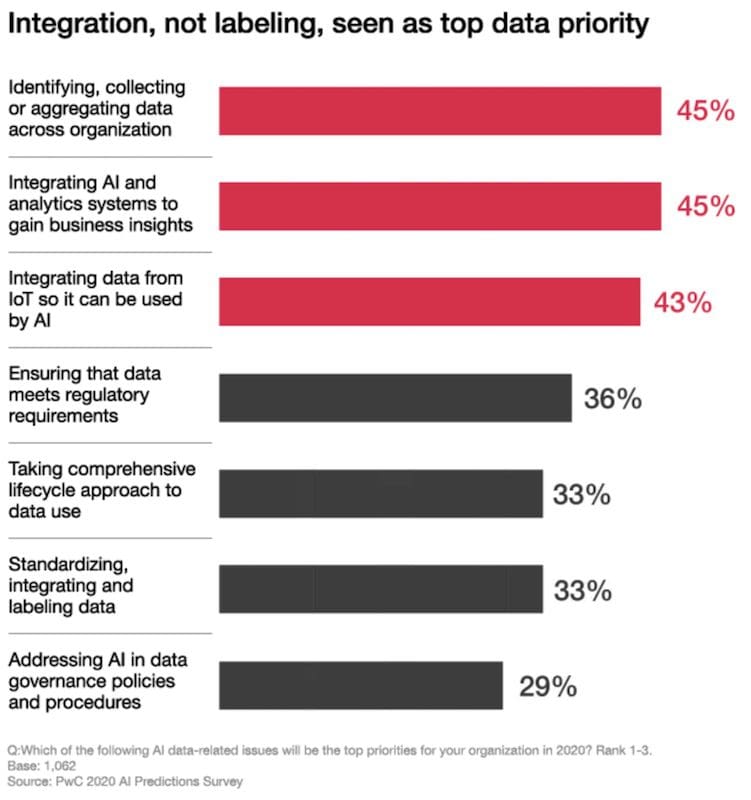Part 1: How AI Computer Vision is Accelerating and Transforming Asset Inspection
This is Part One of a two-part series covering how AI can drastically accelerate Digital Transformation in Asset Inspections.
Businesses are currently undergoing a massive digital transformation, creating opportunities to leverage emerging technologies and enable fresh approaches to business practices. One of the areas most impacted is the way businesses are leveraging technologies to accelerate how they perform asset inspection. This transformation requires a strategic approach if they are to deliver bottom line benefits.
Enterprise Asset Management (EAM) is an area of business that is particularly influenced by these advances in technology– with more asset-centric, real-time data available to be fed back into centralized systems. But in order to realize maximum asset availability and benefit from greater business intelligence and a 360-degree, enterprise-wide view, businesses will need the right EAM approach and workflow. One that is geared towards streamlining asset management and maintenance.
One of the key technological driving forces behind the disruptive trends we are seeing today in the digital transformation of asset inspection is the advances in AI based machine learning and computer vision to automate the inspection process at scale.
A NEED FOR THE RIGHT AI APPROACH
AI has one of the biggest roles in terms of disruption and resulting opportunity for our industries, especially as it relates to asset inspection. With the proliferation of visual data from robots, drone, mobile, and IoT sensors, Enterprises are overwhelmed with the mountain of unstructured data. AI computer vision, when properly operationalized, automates the analysis of this data at scale. This makes the process highly efficient and scalable without relying on the human analysts to manually sift through this dataset.
AI is most effective when it is applied in orchestration with business operational systems and workflows such as trouble ticketing, dispatch, and remediation. AI leaders within Enterprises are therefore looking to operationalize AI across multiple business functions and striving to ensure integration of data, analytics, and workflows across business automation initiatives.
In fact, a recent report by PwC shows that operationalizing AI is one of top priorities for Enterprises.
A PwC survey asked executives which of following AI related issues will be the top priorities for their organization.
The top-three AI data-related challenges all have to do with different kinds of integration or in other words “operationalization” of AI:
- Integrating data from across the organization (45%),
- Integrating AI and analytics systems (45%) and
- Integrating AI with IoT and other tech systems (43%).
We explore some of these applications along with challenges in automation of operationalizing the AI computer process and providing actionable intelligence through deep learning.
CHALLENGES OF OPERATIONALIZING AI
First, let us define what it means to “operationalize AI”. Simply put “operationalizing AI” is the providing an integrated process for both the development and deployment of the AI models into real-world environments.
However many Enterprises are facing many challenges when it comes to operationalizing AI in their organization. These challenges are varied depending on the organization but generally include these categories:
1. Disjointed and separate tools
Often times the tools, data, and practices of the data science organization are not the same tools, data, and practices of the business user organization. These organizations often work with their own proprietary tools, such as data science-oriented tools during the training phase, runtime environments, big data infrastructure, and system interfaces. Bridging of these technologies is difficult and so what happens is a struggle to make the transition from the training phase in the laboratory to the inference phase in the real world.
2. Business applicability
Frequently the data scientist goals and experiments do not align with changing needs of the business organizations. This is in part due to the different tools and difficulties in sharing and collaboration throughout the AI process. Often times these organizations work in their vacuums and only exposed to the results at the end instead of working collaboratively throughout the entire AI process.
3. Data management and data ownership
Many data science personnel feel content working with local data sets on their personal machines, but this doesn’t work well in an operational context. The result is that these organizations operate in what we call “data silos”, leading to significant inefficiencies and duplicated data.
Enterprises are looking for a way to integrate these steps into a seamless AI workflow such that, when properly orchestrated and operationalized, creates tremendous value.
This is Part One of a two-part series covering how AI can drastically accelerate Digital Transformation in Asset Inspections. Part Two in this series covers the steps for Operationalizing AI.
